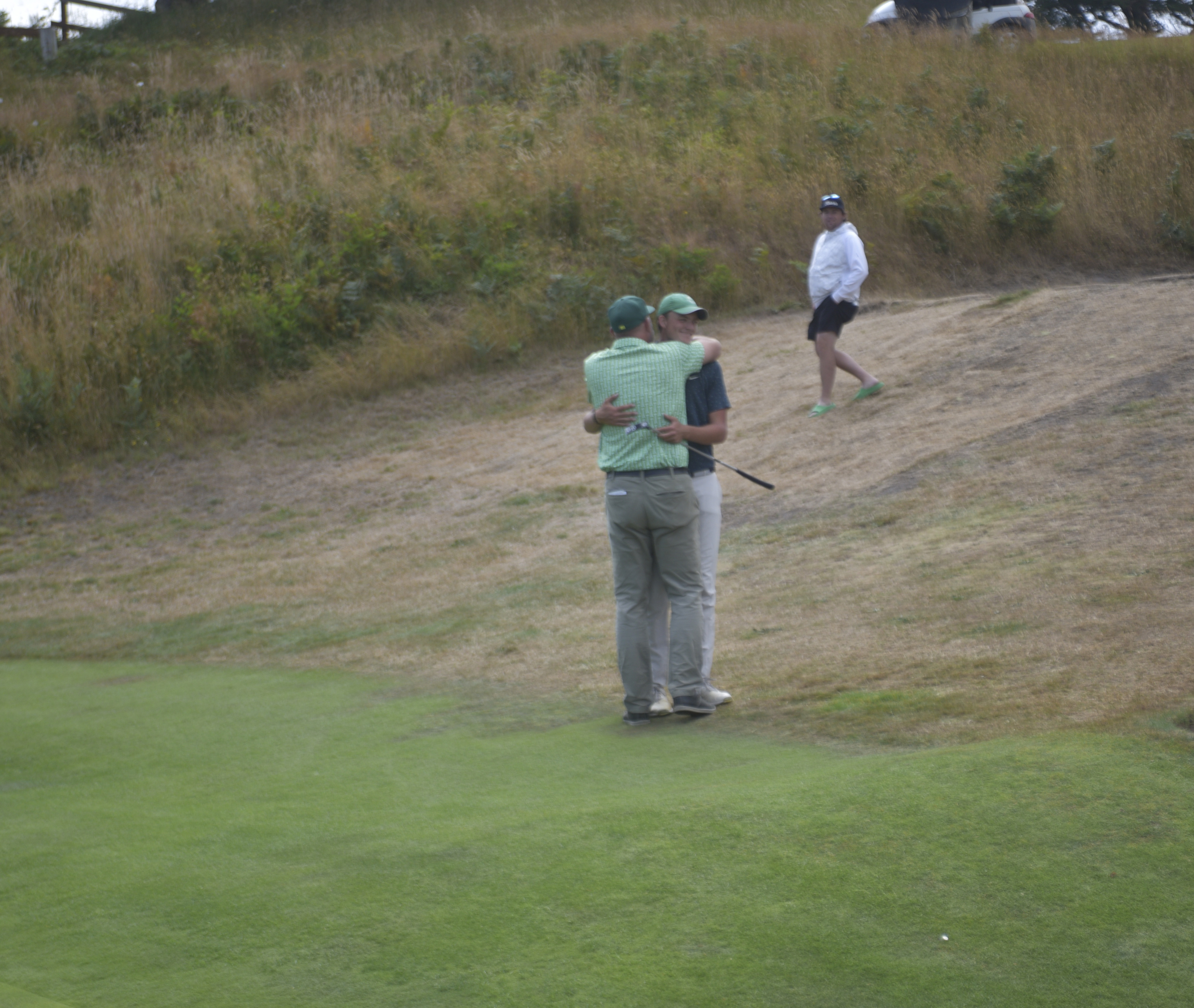Oil disaster:?It could happen here
Published 5:00 pm Tuesday, June 15, 2010
ILWACO, Wash. – It could happen here.
Trending
That was the warning from Dale Beasley, of Ilwaco, fisherman and president of the Washington Crab Fishermen’s Association, about the possibility of a spill and its impact on the Columbia-Pacific coast. “It’s not a matter of if, it’s a matter of when,” Beasley said.
His comments came as President Barack Obama called BP?executives to the White House today for an update on how they are coping with the Gulf of Mexico disaster.
Beasley said the Columbia-Pacific region is vulnerable. Even though there is no offshore drilling, the volume of oil in oceangoing vessels crossing the Columbia River Bar is a potential danger.
Trending
“We’ve had three tanker incidents in just the last two months,” he said. “That ship (Luzon Strait) lost power coming over the bar and had to throw their anchor over. Fortunately it held.”
The volume of tanker traffic up and down the Columbia River argues for the possibility that something, sometime, is going to go wrong. He noted that bunker fuel (IFO-380 heavy fuel oil) “is actually more toxic than crude oil.”
“You don’t have to look as far away as the Gulf to see how unprepared we are,” Beasley said. “We’ve had many close calls just in the past years. And an accident’s not going to be in June or July. It’s going to be December or January when there won’t be the possibility for an easy cleanup.”
As well as the environmental impact on fisheries, Beasley and others worry about a disaster hurting the region’s economy.
“Tourists coming in for clamming add about $28 million to the area. And the crab industry is larger than all the other fisheries combined – I’d say you’re probably looking at about $100 to $150 million,” he said. “So, a catastrophic oil or bunker fuel spill could close down $500 million a year to our local area.
“I almost get a tear in my eye thinking about those people who depend on the ocean down there in the Gulf,” he said. “It’s going to change the complete culture for years to come.”
Seattle oceanographer Curtis Ebbesmeyer, who has consulted the oil industry over the years, also warned about potential economic impacts
“There’s no question what a spill or tanker accident would do to our economy in Washington,” he said. “And Pacific County really, really relies on the fisheries industry to drive its economy. At least 25 percent of the economy comes from fishing and oysters.”
Kim Patten, Peninsula extention agent with Washington State University and oyster expert, is also worried, “For Willapa Bay, in my opinion, an oil spill would immediately shut down the oyster and clam industry which is $45 million a year,” he said. “It would wipe out the crab industry – Willapa is the nursery for young crab – and ditto for salmon.
“It would destroy shorebird and water fowl depending on the time of year. If it was in peak migration in the spring, it would have serious consequence on the entire Pacific Flyway populations for many years.”
Common problemsAccording to the Pacific States/British Columbia Oil Spill Task Force, about once a month a large ship somewhere along the West Coast runs into trouble because of an equipment problem or mechanical failure. Add to that the unpredictable and fierce weather patterns on our shores, particularly in the winter when crossing the Columbia bar is treacherous, and the chances of a tanker accident seem inevitable, he said.
“Anyone who knows this area knows that we can get 30-foot seas and winds of 50 knots (75 mph) for days,” Beasley said. “This is why many of us think we need to be focusing more on prevention.”
Ebbesmeyer, the oceanographer, agreed. “Everyone focuses on the hurricanes in the Gulf – they get more attention – but our winter weather is much more dramatic,” he said. “We can get 100-foot waves. We have much worse storms here than they do in the Gulf Coast.”
Beasley cited incidents that were narrowly averted from being disasters.
? A 350-foot oil barge, the Millicoma, broke loose from its tug towline in bad weather in March 2005 and ran aground off the North Head Lighthouse at the mouth of the Columbia. Eleven of the 15 fuel tanks and four of the six rake tanks were extensively damaged. Fortunately, the tanks were empty.
? In February 1999, the New Clarissa ran aground near Coos Bay, and broke in half during the night. The bow was towed out to sea full of fuel; the stern portion of the boat remained on the beach until 2008.
? In March 1984, 200,000 gallons of crude oil was dumped into the Columbia River by the tanker SS Mobil Oil near Longview, Wash.
Currents won’t help usAccording to Ebbesmeyer, a spill anywhere on the West Coast would quickly spread. “In the summer the currents head south, in the winter they head north,” he said. “So, suppose a spill happens in winter and they’re drilling on the continental slope. Alaska gets hit in a few months.”
Kathleen Sayce, bank scientist for ShoreBank Pacific, offered more disturbing detail, “A spill in our area would mean miles of affected shorelines.”
“From drift work I have done, during northward flow periods, material at the entrance to Willapa Bay reaches Neah Bay in two weeks, or from the Columbia River in three weeks or a little less. Southward, the Columbia River in a week or less.”
“Let’s say there’s an accident on the continental shelf 10 or 12 miles west of Seaview,” she said. “Under present weather conditions, we would have already seen oil on beaches, in estuaries, up the Columbia River to Astoria and Tongue Point, on Clatsop beaches at the north end, perhaps not as far south as Seaside, until northwesterlies start to blow, when it would then go south.”
“The peninsula would be coated. Willapa Bay, definitely the north bay areas – Tokeland and Bay Center – but perhaps not the south bay, Nahcotta south. How far up the Willapa River is not clear, perhaps not to South Bend.”
“Then, with oil in the bay, if the northwesterlies start, the oil would be pushed south throughout the bay, around Long Island, up the Naselle River, down to the south bay area. And with oil still leaking at a hypothetical well-head, it would just keep coming, north, south and east.”
Statewide consequencesOn March 25, U.S. Sen. Patty Murray, D-Wash., spoke on the Senate floor to urge Republicans to end their obstruction and allow the “Big Oil Bailout Prevention Act” to pass.
This bill, co-sponsored by Murray, would make certain that Washington state taxpayers will not have to pay to clean up after oil spills. It would also guarantee that oil companies are held fully accountable for the economic costs resulting from their accidents.
Murray opposes drilling off the Washington coast.
“Washington state’s coastal region supports over 150,000 jobs and generates almost $10 billion in economic activity – all of which would be threatened if drilling were allowed to happen off the West Coast,” she said. “That’s why I’m going to keep fighting for legislation that bans drilling off the West Coast and makes sure big oil companies are never allowed to roll the dice with Washington state’s economy and environment.”
But tanker traffic on the river appears to pose its own hazards, which could be even more dire.
The November 2007 Cosco Busan bunker fuel spill between San Francisco and Oakland, Calif., has been proven, in a closely guarded study, to have reduced the healthy herring population in the San Francisco Bay to zero.
“Once a disaster happens it doesn’t matter what the clean-up plan is – you’re not going to be able to execute it,” said Beasley. “Look at our winter weather. There are whitecaps everywhere you look. You’re not going to skim anything. No boom is going to work.
“And bunker fuel is more toxic than crude oil. The herring in the San Francisco Bay have not returned since the Cosco Busan accident in 2007,” he said. “That’s three years.”
Prevention is the keyBeasley said the focus should be on prevention. He cited the importance of weather prediction and the new buoy that has finally been installed. Additionally, Beasley, meteorologist Cliff Mass, and others have been working almost nine years to convince the government that a Doppler Radar station is needed on the coast.
It appears that it will be finished by 2012 at a site near Grays Harbor. The weather buoy and the radar station will give scientists, and those navigating in our waters, better tools for predicting dangerous winter storms.
GULF OIL SPILL POLL: A new Associated Press-GfK poll finds that 52 percent say they don’t approve of Obama’s handling of the spill.









